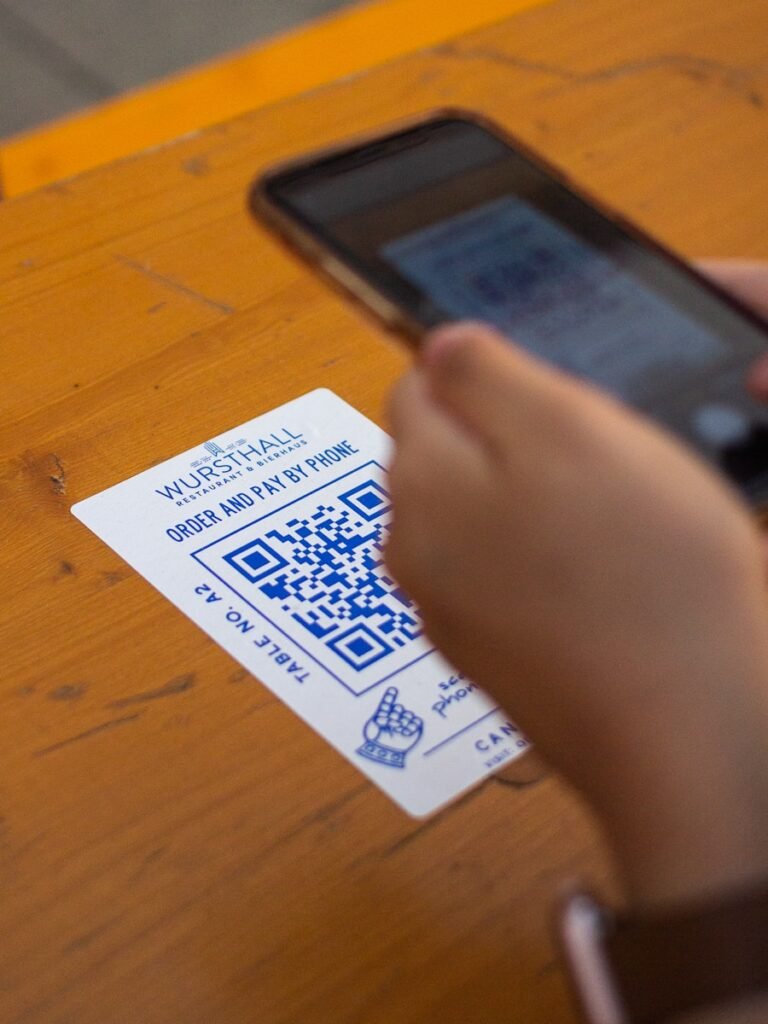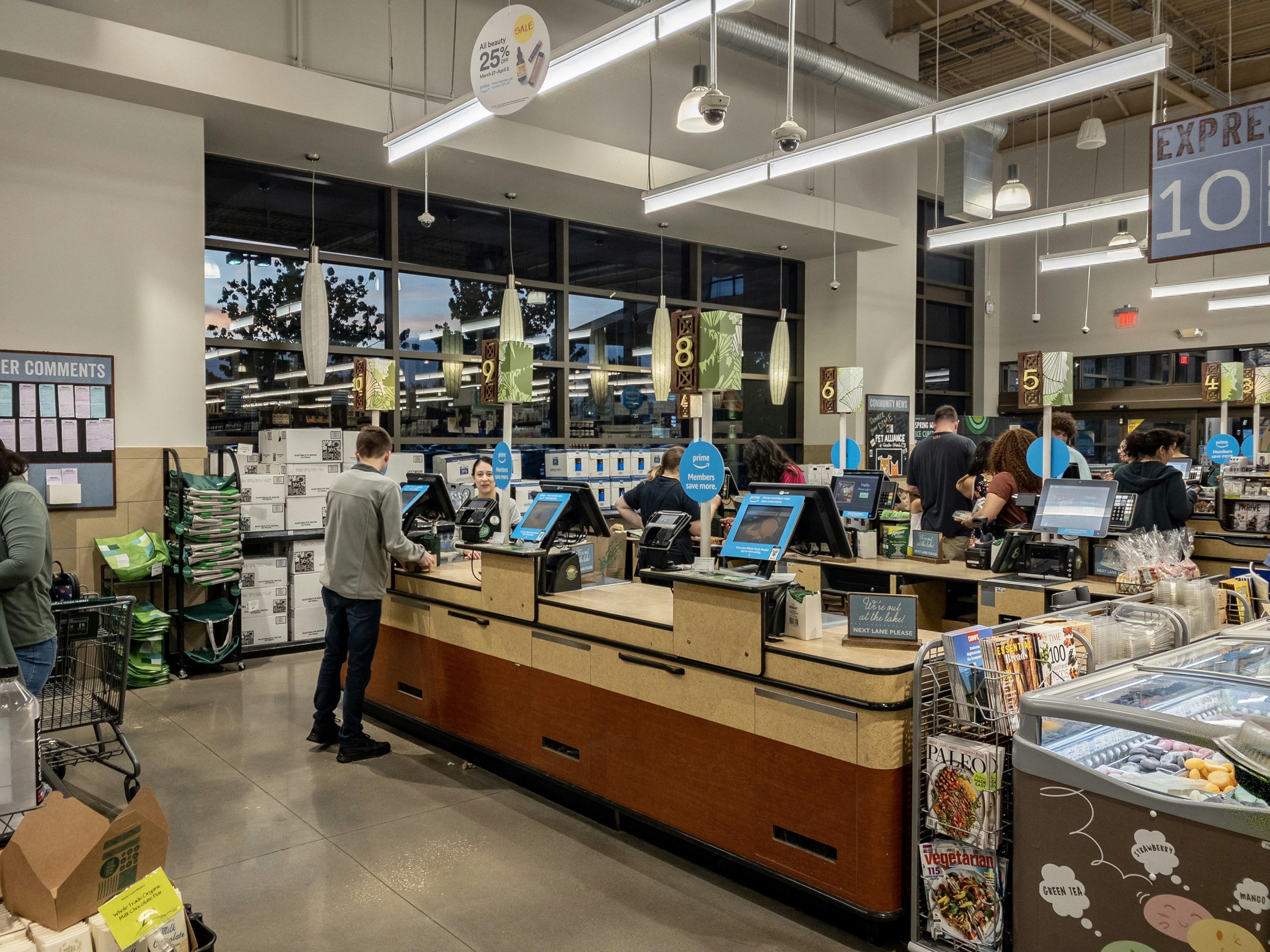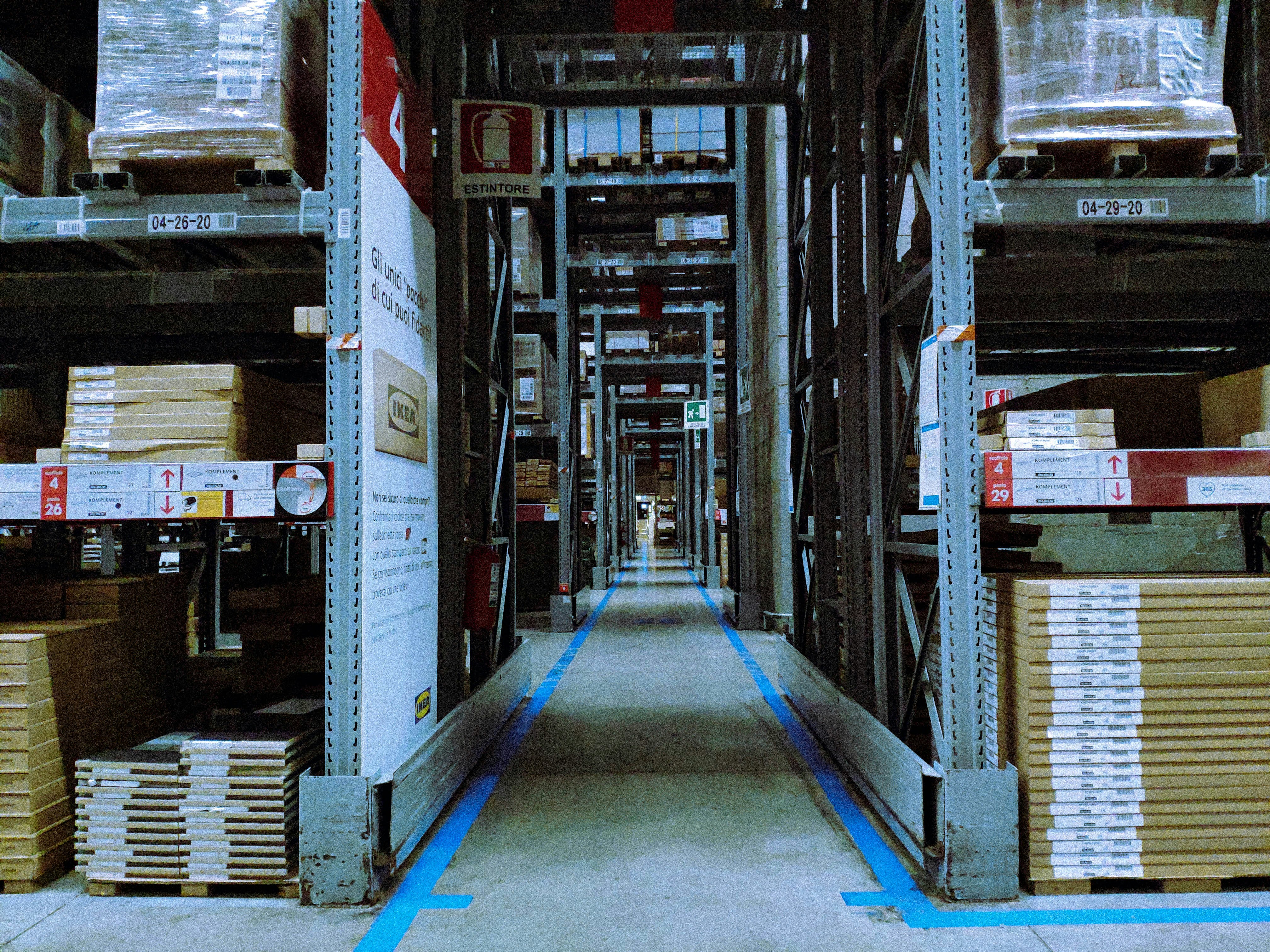Introduction to Barcode Scanning in Restaurants
Barcode scanning is a pivotal technological advancement that has significantly transformed various industries, including the restaurant sector. The emergence of barcode technology has redefined how businesses manage inventory, enhancing both efficiency and accuracy. Traditionally, inventory management involved manual counting and record-keeping, which could lead to errors and inefficiencies. However, with the integration of barcode scanning, restaurants are now able to streamline their inventory processes effectively.
The evolution of barcode technology has made it more accessible and affordable for businesses of all sizes. Initially, barcodes were primarily utilized in retail settings, but their application has expanded into the food service industry. Restaurants are now adopting barcode scanning systems to track inventory levels, manage supplies, and maintain an accurate record of ingredients and products. This shift is largely due to the need for restaurants to operate efficiently while minimizing waste and ensuring that they meet customer demands.
As restaurants face increasing pressure to optimize their operations, the adoption of barcode technology serves as a solution that enhances inventory management practices. By utilizing barcode scanning, restaurants can quickly and accurately scan items to monitor stock levels, thus reducing the time spent on manual inventory counts. Additionally, this technology provides real-time data that can aid in decision-making processes, from ordering new supplies to minimizing food waste. As a result, the implementation of barcode scanning not only improves operational efficiency but also supports better financial management and customer satisfaction.
The Importance of Inventory Management in Restaurants
Effective inventory management is a cornerstone of success in the restaurant industry. It encompasses the processes of tracking stock levels, orders, sales, and deliveries to ensure that a restaurant has the right amount of supplies at all times. This is particularly essential in an industry where spoilage rates can be high and demand can fluctuate significantly. A robust inventory management system allows restaurant operators to maintain a steady flow of ingredients and supplies, minimizing waste while meeting customer expectations.
Challenges in inventory management may arise from a variety of sources, including discrepancies in stock levels, unexpected inventory shortages, and over-ordering, all of which can affect profitability. Inadequate tracking may lead to surplus products that inevitably expire, resulting in financial losses. Conversely, underestimating supply needs can lead to delays in service and dissatisfied patrons, directly impacting a restaurant’s reputation and bottom line.
The impact of strong inventory management on profitability cannot be overstated. By ensuring that a restaurant is neither overstocked nor understocked, operators can control costs effectively. This involves analyzing consumption trends, forecasting demands, and implementing efficient ordering processes. Accurate inventory management helps restaurant owners to identify menu items that are performing well and those that are less popular, which in turn aids in refining the menu based on actual data.
Inventory visibility plays a vital role in maintaining smooth operations. With real-time access to inventory levels, restaurant managers can make informed decisions regarding purchasing schedules, sales promotions, and menu adjustments. The integration of technology, such as barcode scanning, can significantly enhance the accuracy of inventory tracking, reducing human errors and allowing for more efficient workflows. Ultimately, effective inventory management serves as a crucial factor in sustaining a restaurant’s operational efficiency and profitability.
How Barcode Scanning Works: A Technical Overview
Barcode scanning is a technology that utilizes visual patterns—known as barcodes—to represent data in a machine-readable format. Essentially, barcodes are graphic representations of numbers and letters that can be scanned using a specific device, known as a barcode scanner. The mechanics of barcode scanning revolve around the relationship between the printed barcode and the scanner technology that reads it. There are several types of barcodes, including one-dimensional (1D) barcodes and two-dimensional (2D) barcodes. 1D barcodes, such as UPC and Code 128, consist of parallel lines and spaces that signify information while 2D barcodes, like QR codes, can encode a substantial amount of data within their grid-like structure.
To facilitate smooth inventory management, scanning devices are designed to decode these barcodes quickly and accurately. When a scanner captures a barcode, it converts the scanned image into a string of data. This operation might employ various technologies such as laser scanners, which emit light and read the reflected signals, or imaging scanners, which utilize a camera to obtain an image of the barcode. Regardless of the type, the scanning technology helps to instantly identify products by matching the captured data against a pre-existing database.
The next crucial step in the process is the integration of the scanned data with inventory management systems. Once the barcode is scanned, the information is transmitted to the inventory software, allowing for automatic updating and tracking of stock levels. This seamless data capturing process enhances accuracy, reduces human error, and provides real-time information regarding inventory, enabling restaurant owners to optimize their facility’s inventory management practices efficiently. The implementation of barcode scanning technologies continues to reshape operational processes within the food service industry, contributing to a more streamlined and effective inventory management system.
Benefits of Barcode Scanning for Restaurant Inventory
Implementing barcode scanning technology in restaurant inventory management presents a multitude of advantages that can significantly enhance operational efficiency. One of the primary benefits is the substantial increase in efficiency during stock management processes. Barcode scanning allows staff to quickly and accurately capture data regarding inventory levels, leading to a considerable reduction in the time spent on manual counts and reconciliations. This swift data entry facilitates better overall time management, allowing employees to focus on service delivery and customer satisfaction.
Improved accuracy is another critical benefit of barcode scanning for inventory management. Manual stock counting is often prone to human error, resulting in discrepancies that can disrupt service and financial reporting. Barcodes provide a precise method for tracking inventory, thus minimizing the likelihood of such errors. This accuracy is vital not only for current inventory tracking but also for maintaining accurate historical records, which can inform future purchasing decisions.
Moreover, barcode scanning aids in reducing waste, particularly in managing perishable goods. By using barcode systems, restaurants can effectively monitor expiration dates and inventory lifecycles, ensuring that perishable items are used or sold before they spoil. This proactive approach to inventory management greatly mitigates loss and enhances profitability.
Additionally, the ability to track inventory levels in real-time allows for quick adjustments to menus based on available ingredients. This flexibility ensures that restaurants can efficiently respond to supply fluctuations or seasonal changes, thereby optimizing their offerings while minimizing customer dissatisfaction. Overall, barcode scanning provides a comprehensive solution to streamlining restaurant inventory management, improving accuracy, reducing waste, and facilitating swift decision-making processes. Its integration into restaurant operations can be a game-changer for enhancing overall performance.
Integrating Barcode Scanning with Existing Systems
Integrating barcode scanning technology into existing restaurant management systems represents a significant advancement in enhancing inventory control. However, the process involves careful consideration of potential challenges and compatibility with current point-of-sale (POS) systems. Restaurants that have been operating with traditional inventory management methods may face obstacles when transitioning to a more automated approach. One common challenge is ensuring that the selected barcode scanning software is compatible with the existing POS systems. Restaurants must conduct thorough research to identify software that seamlessly integrates with their current technology to avoid disruption in operations.
Furthermore, the integration process may require significant adjustments, not only in software but also in hardware. For instance, the installation of barcode scanners and proper labeling of inventory items must be undertaken. Restaurants should assess their current infrastructure to identify necessary upgrades to support the new system. This may involve investing in modern barcode scanners, updating POS software, or even purchasing additional inventory management tools to fully leverage the advantages of barcode scanning technology.
Another critical aspect of successful integration lies in staff training. Adopting barcode scanning technology necessitates that employees understand how to effectively use the new tools and processes. Comprehensive training programs must be developed to instruct staff on best practices for scanning items, updating inventory records, and monitoring stock levels. Ensuring that all team members are comfortable with the new system is essential for maximizing efficiency and minimizing errors in inventory management. By addressing these integration challenges through careful planning and training, restaurants can successfully implement barcode scanning technology, thereby enhancing their inventory management capabilities.
Case Studies: Successful Implementation of Barcode Scanning
Many restaurants have begun to embrace the efficiency and accuracy of barcode scanning technologies for inventory management. One notable example is a fast-casual restaurant chain that struggled with frequent discrepancies in their inventory counts, leading to waste and financial losses. By integrating a barcode scanning system, they were able to eliminate manual counting errors and streamline their ordering process. Employees were trained to scan items as they entered and exited the inventory, providing real-time data to management. This shift not only reduced stock discrepancies by over 30% but also improved the speed of service, as staff spent less time on inventory management.
Another case study involves an upscale dining establishment that faced challenges in tracking perishable goods. The restaurant adopted barcode scanning to monitor the shelf life of products, allowing them to proactively manage their inventory. By assigning barcodes to each item and utilizing scanning devices to assess expiry dates, the establishment minimized food waste significantly. This approach ensured that only the freshest ingredients were used in meals, enhancing customer satisfaction and reinforcing the restaurant’s reputation for quality.
A third example can be found in a small family-owned pizzeria that previously relied on a spreadsheet system for inventory management. This method was time-consuming and often led to stock shortages, especially during busy weekends. They transitioned to a barcode system to improve their inventory accuracy. The integration required an initial investment in technology, but the owners reported that within six months, they saw a 25% reduction in costs associated with over-ordering and waste. Staff found the system user-friendly, and they appreciated the accurate insights it provided regarding inventory turnover rates.
Overall, these case studies illustrate the diverse applications of barcode scanning in restaurant inventory management. Each success story highlights not only the benefits realized post-implementation but also the important step towards a more efficient operational model.
Common Challenges in Barcode Scanning Implementation
Barcode scanning technology has increasingly become a vital tool for restaurants looking to streamline their inventory management processes. However, the adoption of this technology is not without its challenges. Restaurants may encounter various obstacles during the implementation phase, which can lead to a delayed return on investment and frustration among staff members.
One significant challenge is the initial setup costs associated with barcode scanning systems. Expenses can accrue rapidly, including the purchase of barcode scanners, software licenses, and external systems that may require upgrades. Depending on the size of the restaurant and the complexity of its inventory system, these costs can be substantial and potentially daunting for smaller establishments. It is crucial for restaurant owners to conduct a thorough cost analysis and understand these expenses before proceeding with installation.
Another obstacle is the training required for staff to effectively utilize barcode scanning technology. Employees must be proficient not only in operating the scanning devices but also in understanding the software interface that supports inventory management. If staff members are resistant to change or find the new processes cumbersome, the overall efficiency gains from barcode scanning may not be realized. Thus, investing time in comprehensive training is essential to ensure a smooth transition.
Furthermore, system compatibility issues can hinder the successful integration of barcode scanning into existing inventory management frameworks. Some restaurants may rely on outdated systems that do not support the latest scanning technology, leading to interoperability problems and inefficiencies. To mitigate this risk, it is advisable to assess current technology and software before implementation to identify potential compatibility challenges.
Finally, ongoing maintenance of scanning devices is required to ensure they remain operational. Regular updates, technical support, and device replacements can contribute to additional costs and downtime if not effectively managed. Addressing these challenges proactively can greatly enhance the likelihood of successfully integrating barcode scanning into restaurant inventory management.
Future Trends in Inventory Management for Restaurants
The landscape of restaurant inventory management is rapidly evolving, driven by technological advancements and changing consumer demands. As we look forward, several trends are emerging that are expected to reshape the way restaurants manage their stock. One significant development is the increasing integration of artificial intelligence (AI) and machine learning into inventory systems. These technologies can analyze vast amounts of data, identify patterns, and provide actionable insights that can lead to improved efficiency and reduced waste in inventory management.
One of the most promising applications of AI in inventory management is predictive analytics. By utilizing historical sales data, AI can forecast future inventory needs more accurately, ensuring that restaurants optimize their stock levels and reduce spoilage. Additionally, machine learning algorithms can refine these predictions over time, allowing for a more agile approach to inventory control. These advancements offer the potential for not only improving stock management but also enhancing overall operational efficiency.
Moreover, the integration of barcode scanning technology with these advanced systems presents a unique opportunity for restaurants. Barcode scanning has already proven its value in streamlining inventory check-ins and tracking usage, but when paired with AI, it can enable real-time monitoring and dynamic adjustments based on inventory turnover rates. This synergy between AI and barcode systems can drastically reduce human error and improve accuracy in stock levels.
Furthermore, there is a growing emphasis on sustainability in the restaurant industry. Future inventory management solutions are expected to incorporate features that help restaurants track and minimize food waste. Innovative tools may provide analytics on spoilage rates and suggest optimal purchasing strategies, contributing to more environmentally responsible practices. As technology continues to advance, the restaurant industry stands poised to benefit significantly from the integration of AI, machine learning, and enhanced barcode scanning applications, ultimately elevating inventory management to new heights.
Conclusion: The Future of Restaurant Inventory Management
As the landscape of the restaurant industry evolves, effective inventory management remains a cornerstone of operational success. Throughout this discussion, we have highlighted how barcode scanning technology stands as a transformative force in this sector, enabling establishments to streamline their inventory tracking processes. By implementing barcode scanners, restaurants can significantly reduce human error, enhance accuracy in stock levels, and improve the overall efficiency of their inventory management systems.
One of the key advantages of integrating barcode scanning is the time-saving potential it offers. With automated inventory counts, restaurant staff can allocate their time to other critical tasks, such as customer service and food preparation. This leads not only to heightened operational efficiency but also contributes to enhanced customer satisfaction, a vital aspect for any thriving restaurant. Furthermore, the real-time data access provided by barcode scanning aids in better decision-making regarding purchasing, stock rotation, and waste management. By using historical data gleaned from scanning, restaurants can forecast inventory needs and minimize excess stock that typically contributes to lost profits.
The economic benefits of adopting this technology cannot be understated. Streamlined inventory management often results in reduced operational costs and increased profitability. Restaurants that embrace barcode scanning are in a better position to maintain optimal stock levels and avoid costly stockouts or overstock situations. Therefore, it is imperative that restaurateurs consider these advancements seriously. As barcode scanning technology continues to develop, its potential to reshape inventory management practices will only grow stronger. In light of these benefits, restaurant owners should assess their existing systems and explore the possibilities that barcode scanning presents for future operational improvements.
© barcodly.com- All rights reserved





